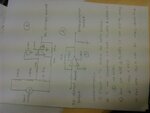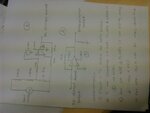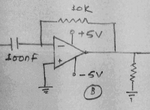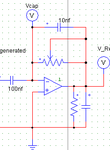deepakchikane
Full Member level 3
- Joined
- Jul 17, 2012
- Messages
- 178
- Helped
- 2
- Reputation
- 4
- Reaction score
- 2
- Trophy points
- 1,298
- Location
- Mumbai, Maharashtra, India, India
- Activity points
- 2,623
Hello All,
i am making the analog circuit of ac voltage interruption for the short time or ac cut by 2 ms.
I have done the differentiator with the TL074 IC.
By looking at the output waveform it is very glitchy.. i am looking for a good performance opamp ic fr the ac voltage sudden detetion.
i have done with the opa233O & performance is good but this ic is limeted to max 5.5 v
can anyone suggest a good performance ic for the differentiator?
- - - Updated - - -
https://obrazki.elektroda.pl/9745221400_1445867511.jpg
- - - Updated - - -
https://obrazki.elektroda.pl/7201212600_1445867828.png
- - - Updated - - -
https://obrazki.elektroda.pl/7201212600_1445867828.png
i am making the analog circuit of ac voltage interruption for the short time or ac cut by 2 ms.
I have done the differentiator with the TL074 IC.
By looking at the output waveform it is very glitchy.. i am looking for a good performance opamp ic fr the ac voltage sudden detetion.
i have done with the opa233O & performance is good but this ic is limeted to max 5.5 v
can anyone suggest a good performance ic for the differentiator?
- - - Updated - - -
https://obrazki.elektroda.pl/9745221400_1445867511.jpg
- - - Updated - - -
https://obrazki.elektroda.pl/7201212600_1445867828.png
- - - Updated - - -
https://obrazki.elektroda.pl/7201212600_1445867828.png



